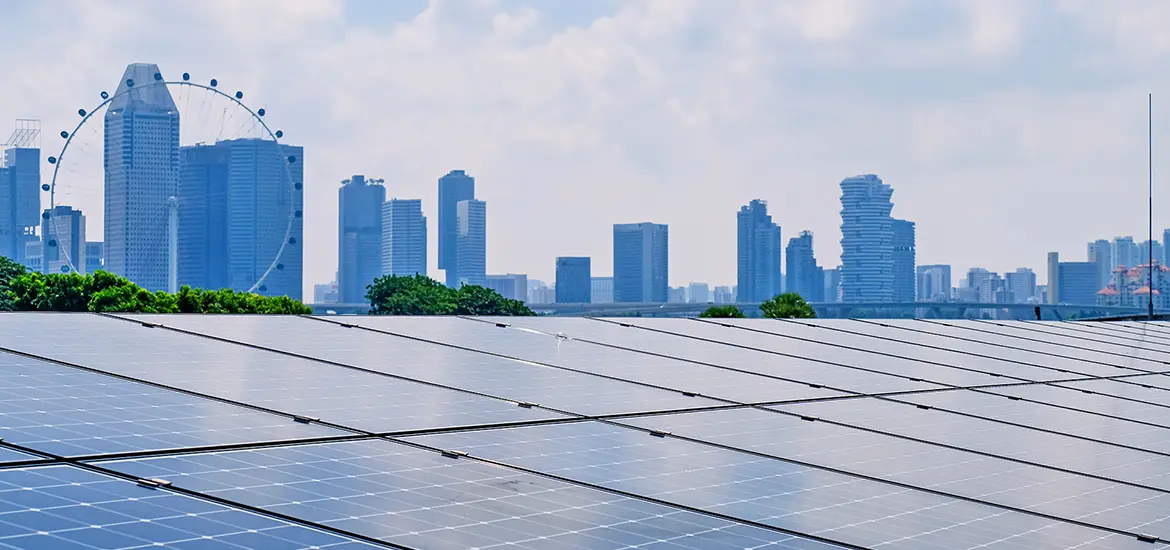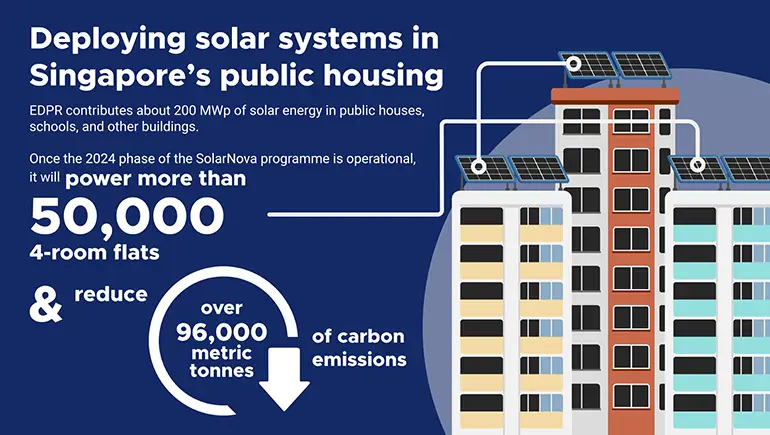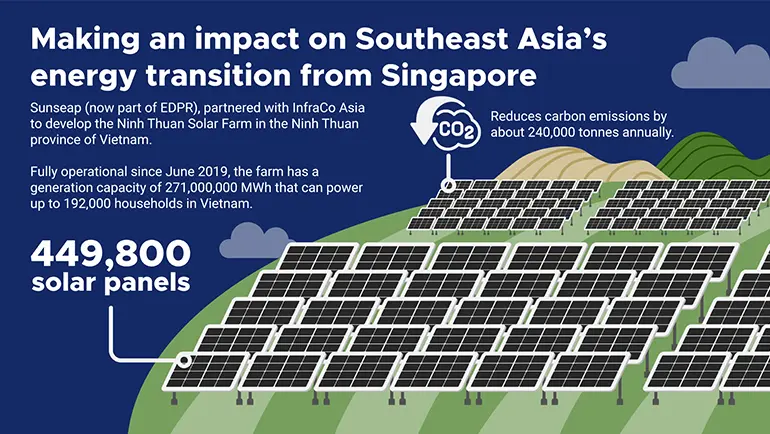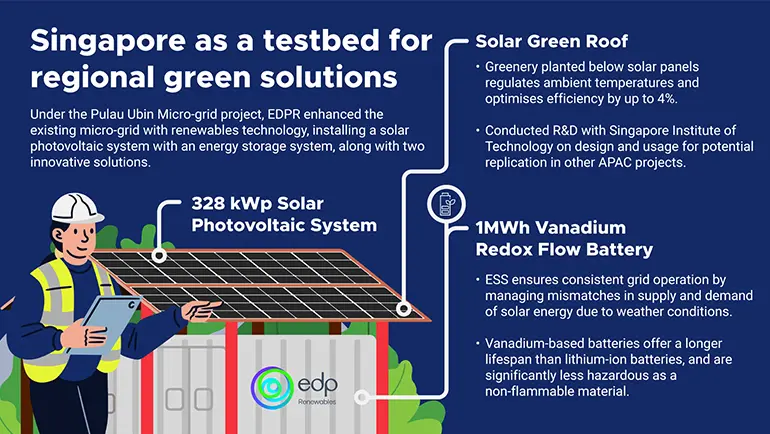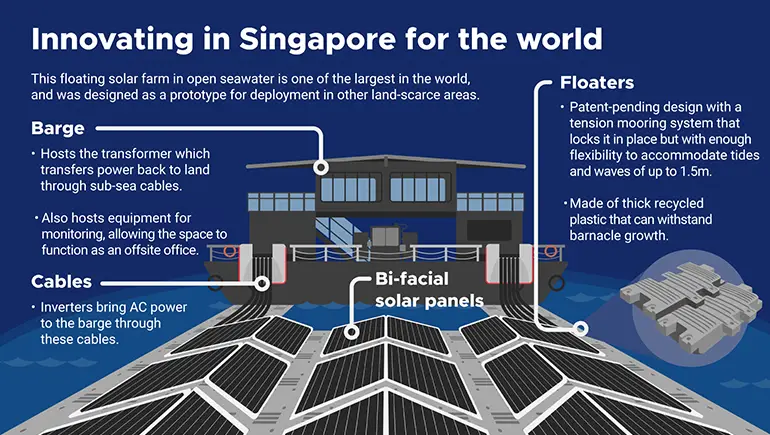Along the Straits of Johor between Singapore and Malaysia is an unusual sight – a nearshore floating solar photovoltaic system of over 13,000 solar panels. One of the world’s largest floating solar farms on seawater, the project is an innovative solution specially designed by EDP Renewables APAC for land-scarce, densely populated cities like Singapore to tap into renewable energy. The successful installation of the five megawatt-peak (MWp) project, which can generate enough solar energy to power 1,100 four-room flats in Singapore per year, paves the way for more of such projects to follow in the region.
Renewable energy from nearshore floating solar farms and other innovative sources are crucial to accelerating Southeast Asia’s energy transition. A joint report by EDB and McKinsey & Company estimates that solar and onshore wind power generation will have to increase between seven and twelvefold to meet the net-zero emission targets set by countries in the region. This in turn is a growth opportunity for businesses – according to a study by the International Energy Agency (IEA), clean energy investment needs to increase by nearly five-fold to about US$190 billion (S$260 billion) by 2035 in order to hit regional net-zero goals1.
Recognising this potential for growth, global renewable energy leader EDPR established its Asia Pacific headquarters in Singapore via the acquisition of local renewable energy company Sunseap in February 20222.
Since then, EDP Renewables APAC has grown into a true regional trailblazer for renewables deployment, with a committed capacity of 1.6 gigawatt-peak (GWp) of solar energy projects (as of December 2024) in the region. The company has also more than tripled its total renewables capacity since February 2022, surpassing the one GW milestone. We examine some key decisions that played a major role in their success.
Prioritising scale and commitment when selecting a regional headquarters location
According to a report by Bain, Temasek, and Amazon Web Services, strong public-private partnerships are key to the success of any renewable energy deployment. Clear government objectives that set the pace of climate action and investment also provide a conducive environment for private sector investments, which can facilitate scalable energy solutions for the region.
To this end, Singapore stands out as a natural choice for renewable energy companies such as EDPR. Take the Singapore Green Plan 2030, a whole-of-nation movement to advance Singapore’s national agenda on sustainable development. Among its 2030 targets is to increase solar deployment to at least two GWp — driving demand for renewable energy companies like EDPR.
